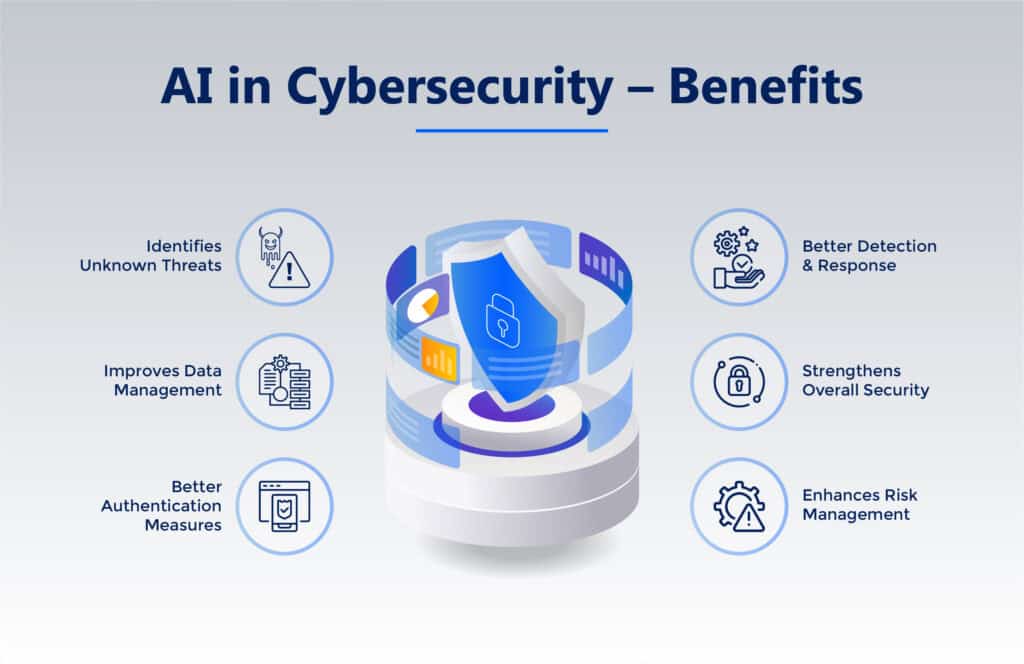As we move into 2025, artificial intelligence (AI) continues to transform various industries, and cybersecurity is no exception. With the rise of sophisticated cyber threats, organizations are increasingly turning to AI-powered tools to enhance their security measures. In this article, we’ll explore the growing role of AI in cybersecurity and highlight the key trends and innovations shaping the industry in 2025.
How AI is Revolutionizing Cybersecurity
Cybersecurity threats are constantly evolving, making traditional defense methods less effective. AI technologies, with their ability to analyze vast amounts of data in real-time and adapt to new threats, are becoming essential for protecting sensitive information. By leveraging machine learning (ML), natural language processing (NLP), and anomaly detection, AI can identify and respond to potential threats much faster than human security teams.
Key AI Innovations in Cybersecurity
- Predictive Threat Detection
One of the most powerful applications of AI in cybersecurity is its ability to predict and prevent threats before they happen. AI systems use machine learning to analyze patterns of behavior, identifying anomalies that could indicate an emerging threat. This proactive approach allows security teams to take action before a breach occurs, rather than reacting after the fact. - Automated Incident Response
AI can also automate responses to security incidents, significantly reducing the time it takes to contain and mitigate threats. For example, AI systems can automatically block suspicious IP addresses, quarantine infected files, or alert administrators in real-time, all without human intervention. This speed and efficiency are crucial in minimizing damage during a cyberattack. - Advanced Malware Detection
Traditional malware detection methods rely on signature-based detection, which can miss new and sophisticated variants of malware. AI-powered systems, however, can analyze the behavior of files and programs, identifying potential malware based on how they interact with the system. This allows for the detection of both known and unknown threats, providing more comprehensive protection. - Enhanced Phishing Protection
Phishing attacks continue to be one of the most common and damaging forms of cybercrime. AI is helping to combat these attacks by using machine learning algorithms to identify suspicious emails and websites. These systems analyze patterns in email content, sender information, and even the metadata behind links to spot phishing attempts before they reach the user.
 Trends Shaping AI in Cybersecurity for 2025
Trends Shaping AI in Cybersecurity for 2025
1. AI-Powered Endpoint Security
As remote work becomes more common, endpoint security has become a top priority for businesses. AI-powered endpoint protection solutions can continuously monitor devices for signs of compromise, providing real-time defense against potential threats like ransomware and data breaches.
2. AI in Threat Intelligence
AI is revolutionizing the way organizations gather and use threat intelligence. By analyzing global threat data, AI systems can provide businesses with up-to-the-minute insights on emerging threats and vulnerabilities. This helps security teams to stay one step ahead of cybercriminals.
3. Ethical AI and Privacy Concerns
As AI continues to play a bigger role in cybersecurity, there are growing concerns about privacy and the ethical use of AI. Ensuring AI systems respect user privacy and are free from bias is a key consideration moving into 2025. Organizations must strike a balance between leveraging AI for security while respecting ethical guidelines.
Benefits of AI in Cybersecurity
- Faster Response Times: AI reduces the time it takes to detect, analyze, and respond to cyber threats.
- Cost Efficiency: By automating many security tasks, AI helps reduce the need for extensive human resources, making cybersecurity more cost-effective.
- Scalability: AI systems can scale quickly to accommodate growing networks and an increasing number of devices without sacrificing security.
 Conclusion: Embracing AI for Stronger Cybersecurity
Conclusion: Embracing AI for Stronger Cybersecurity
AI’s role in cybersecurity is only going to grow as cyber threats become more advanced. By leveraging AI technologies, businesses can stay ahead of potential attacks, automate responses, and protect sensitive information more effectively. As we approach 2025, investing in AI-driven cybersecurity solutions will be essential for organizations looking to safeguard their digital infrastructure.
